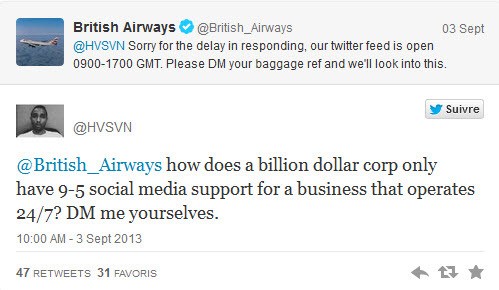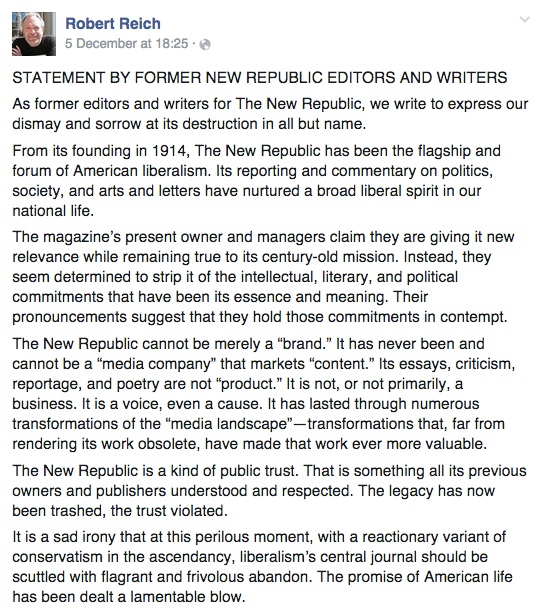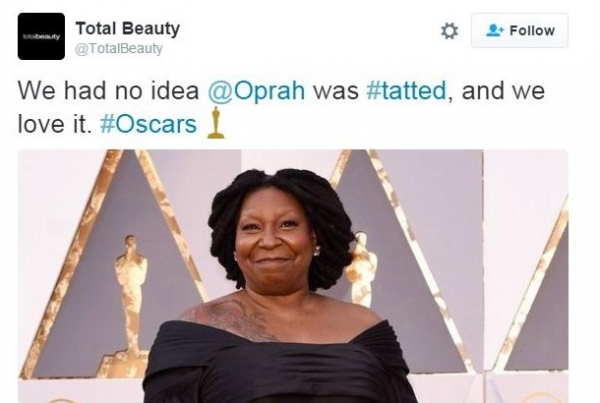 Szymon Dyrlaga
created
edited
Szymon Dyrlaga
created
edited
16 worst social media mistakes
Back to list of articlesSocial media platforms can be great tools or enemies for your business. Depending on how your run your social media communication you can gain a huge following or endanger the reputation of your brand.
Read on to learn about some of the common mistakes to avoid in social media and how to best use it to your benefit.
Basic mistakes
There are certain rules that govern the use of social media that you just can’t break without causing serious problems for yourself. Stay on the safe side by avoiding these 6 basic mistakes.
1. Not answering comments and private messages

Start discussions and answer active participants in helpful ways. Communication in social media should be a two-way street, just like a real conversation. People like to engage with brands that show a human face rather just promote an advertisement.
Not getting back to anyone who asks for or needs a reply tells everyone that trying to get in touch with you is a waste of time. Don’t let anyone think you aren’t watching what’s going on!
2. Using the wrong language for the medium
Various online platforms have their own unique language and style of communication. When you commit to a certain medium, make sure that your strategy and presence follows the right rules. In short:
- Facebook is essentially universal and you can use different kinds of content like text posts, photos, films, surveys, etc.
- Snapchat is great for spontaneous films and pictures, it’s laid back and all about fun
- On Instagram, the quality of your pictures really counts so make sure yours are impressive
- Pinterest is like an online message board with pictures. Infographics and other visuals in the portrait orientation are popular here
- Twitter is a microblog. It works well with subjects linked to popular hashtags and real time marketing
- LinkedIn is social media with a business accent so be sure to present yourself as a leader in your field
It’s crucial that you understand the “language” of the medium before you invest in it as a marketing channel.
3. Using the wrong language for your target group
Use language and subjects that are appropriate for your target groups in social media.
If you’re going after teenagers, the language of your communication should be more direct, easier to understand and playful and you probably want to avoid subjects like politics or the national economy.
In the business world, things are much more formal and concrete but remember that everyone, no matter their professional standing or social standing, relates better to communications with a human touch.
Frequent and well-managed communication helps you to get attention. Look at how Lego appeals to their target market (kids and their parents) while promoting their brand:

4. Publishing content that is too unfocused too often
Always remember that your subscribers have a limited amount of time to check out new posts in social media and anything too time-consuming gets ignored. Even Facebook says you have about 3 seconds to get and hold a reader’s attention.
Communicate with the help of graphics and short messages limited to specifics. In the context of such a massive amount of content on social media, you have to stand out and engage like no one else. Don’t be foolish enough to think that anyone is going to spend a few minutes reading what you wrote!
Look at what Robert Reich wrote on Facebook. Twenty-five lines of text without any pictures or even a summary. Not even a header to give us a clue as to what the text is about or who it’s directed to. Who’s going to spend the time to find out? Don’t scare readers away with a text that tells them to keep moving and searching for something else.

5. Forgetting about mobile devices
At the beginning of 2015, mobile devices made up over 80% of all devices used to view social media profiles. This means that your social media content be designed for short attention spans but also for small screens.
To adapt to the needs of your subscribers using mobile devices, remember to avoid using too many lines of text and small elements that require enlargement. Keeping readers focused on your message means not irritating them with the need to make things larger.
Imagine going to your social media page on a your mobile phone and seeing the graphic below. Do you want to take the time to enlarge it so you can read everything? On some platforms like Facebook, the image will be compressed and small letter may not even be legible anyway if you zoom in for a closer look. Don’t make anyone spend time resizing your posts just to see what they’re about!

6. Getting into arguments and creating confrontations in comments
One of the basics of effective communication in social media is avoiding conflicts, disputes and generally offending anyone. There’s no need to get caught up in petty insults or anything that can make you look bad. These kinds of things can escalate very quickly and one wrong step can make you famous for all the wrong reasons.
Here’s an example of such a mistake and more specifically intentional sarcasm that fell flat. Don’t think Ask For Help could have handled this differently?

Critical Errors
1. Not completing your profile
A profile that’s missing basic information or pictures doesn’t look professional, makes a negative impression and makes getting in touch difficult. Be sure that you always include your:
- product or company description
- contact information
- website address
- opening hours
- profile picture and other graphics
In the case of LinkedIn, you also need to include details associated with your company:
- What kind of company it is
- The company’s status (operating/not operating)
- The field you are active in
- When the company was started
- Contact details
- Relevant specializations
Connected discussion groups (you must be a member or administrator)
Theft or abuse of copyright in your posts
Just because something is easily available online doesn’t mean it’s free or legal. Unfortunately, a common practice among many social media managers is to use commercial images found in Google without respecting the obligation to cite their sources.
Avoid problems by either buying images directly from photographers or paying for graphics from services like Shutterstock, where it’s easy to find just what you need.
3. Buying fans, followers and likes
Increasing the number of people who follow you in social media might seem impressive but more and more people are becoming wise to the reality that many businesses cut corners in their pursuit of new fans. On top of that, social media platforms also know this and they limit the reach of posts from profiles that have a suspiciously high number of inactive followers.
Creating good viral content like infographics, memes and films and building your fan base through natural mechanisms, even if it may be slower than simply buying fans, is always a better way to grow. Ultimately, it’s about engagement and not how many fans you have. Focus on attracting new fans with you content and the numbers will come.

4. Wrong or excessive use of hashtags
Hashtags are good for “attaching” discussions to certain topics. The problem with them is that not everyone understands how to use this tool to effectively increase the reach of posts and avoid mistakes. Hashtag errors can be divided into two groups:
Using a hashtag that’s popular but not related to the subject
Don’t use hashtags to increase your reach just for stats because it will be a one-off occurrence that won’t bring any benefit. Just because more people see your post doesn’t mean that more people will engage with it or become followers. It’s much better to use hashtags that may have a smaller reach but are better targeted and have a higher chance of converting readers into regular followers and leads. Also, Twitter can suspend your account if you spam tons of unrelated hashtags.
Using hashtags that hurt your image
Hashtags don’t contain spaces, which often leads to mistaken connections or changed words. It sometimes happens that spellings can “attach” you to subjects you would probably rather stay away from.
Whoever set up #wtff on Twitter for Burger King may or may not have been aware that What The French Fry could be used in other ways...

5. Focusing on fan quantity, not quality
Just like buying fans, it’s mistake to focus too much on how many you have. It’s a common practice among administrators of social media profiles to invite their friends to follow a page despite the fact that these friends are rarely interested in the subject. This may push a number higher but it does almost nothing to collect leads that turn into sales.
Focus on the quality of the fans you attract and engage with them. Interaction with fans does a lot to enhance your brand while padding your stats with people who are not interested in your message does nothing for you.
6. Failing to promote sales through social media
They say that social media doesn’t sell but there’s no reason to stop promoting your products on your social media profiles. If you are careful to concentrate on delivering quality content, an occasional advertisement can promote sales even without paid promotion.
Remember that the more good posts you share, the greater your reach and the more people who see your posts. This means that every so often you can publish an ad that a larger group will see. Strike a balance between growing your base with good content and inserting a promotional message from time to time.
Simple everyday mistakes
1. Unverified information
As a publicist, publisher or blogger you have to pay special attention to the accuracy of the information that you pass along. Readers expect what you share to be factually correct and frequent mistakes or intentionally misleading information is a sure way to lose readers.
Twitter provides lots of examples of journalists who are a bit too eager to be the first to break a story. Sometimes they get it very wrong:

2. Bad links
You’ve surely noticed that it’s easy to make a mistake when copying and pasting and that applies to links too. This can lead to dead ends on Twitter and huge embarrassment depending on what you mistakenly paste into your posts:

3. Getting one person confused with another
Being in a hurry or simply not knowing what you’re talking about can have amusing consequences. Someone at Total Beauty should have paid a bit more attention before telling us about “Oprah”:

4. Starting a tweet with “@”
To refer to someone on Twitter, you have to use the “@” sign and the name of the user you want to mention. If the “@” is placed at the beginning of the tweet, it’s treated like a reply and only the person who is mentioned will see it.
This isn’t always a mistake since sometimes you just want to contact a particular person. You have to remember that if you want others to see the post you have to drop the “@” at the beginning.
This tweet was only seen by the people at HubSpot:

This tweet, with a period in front of the “@”, is considered to be a mention and displayed on IBM’s profile along with anyone who follows the poster (CBROnline.com, in this case).

There are other mistakes and accidents in social media but these 14 are the main problems that plague users. You can avoid all of them just by taking an extra few seconds to review what you’re posting before that final click. Good luck and remember to be careful - the internet doesn’t forget your mistakes!

